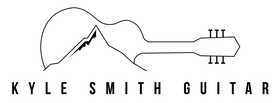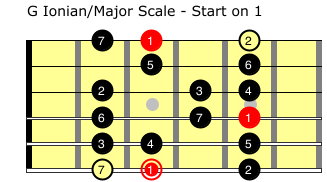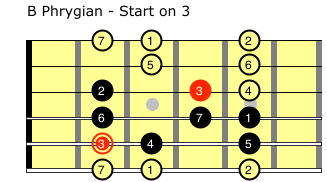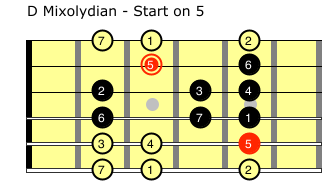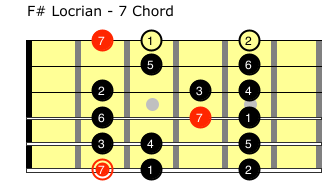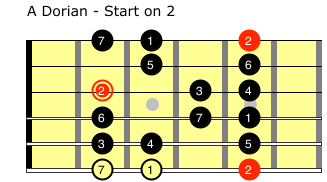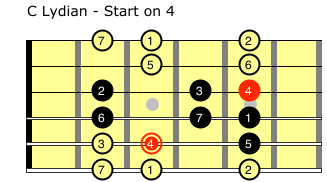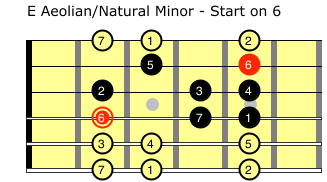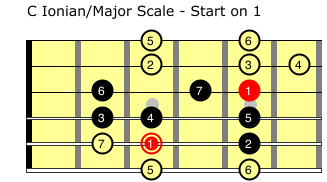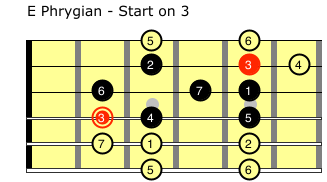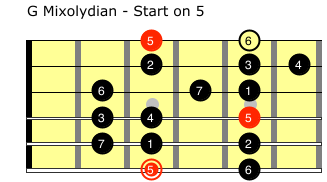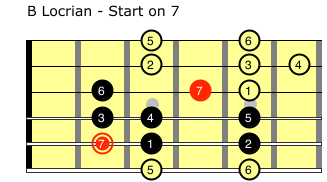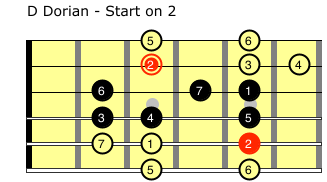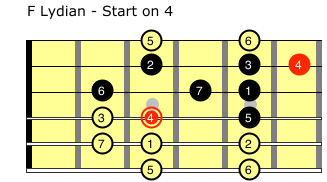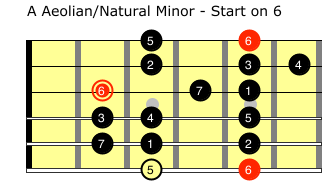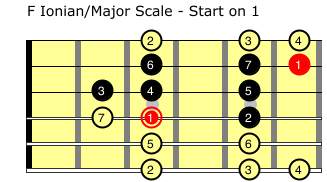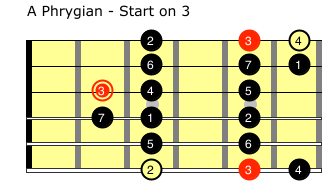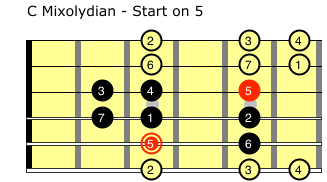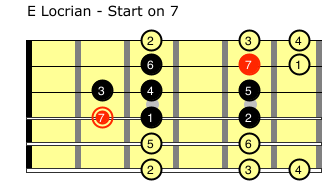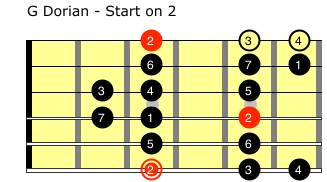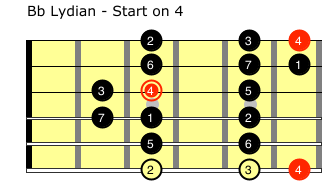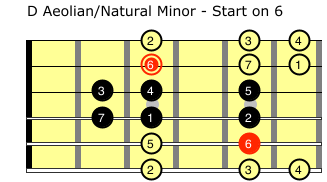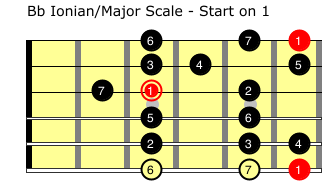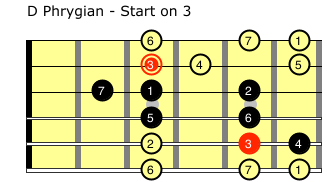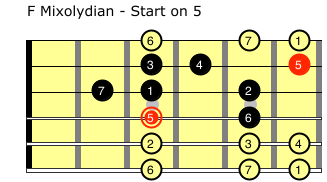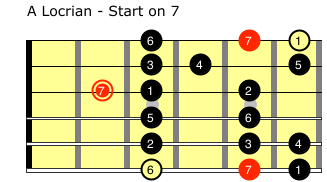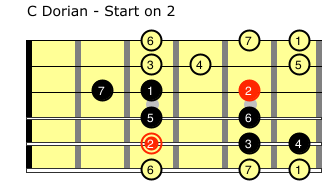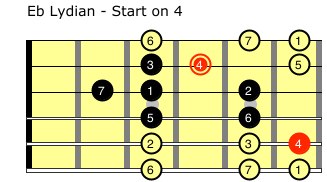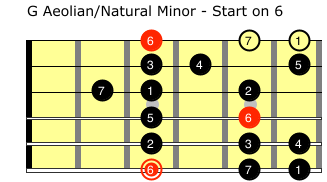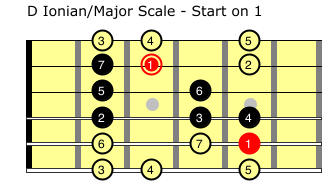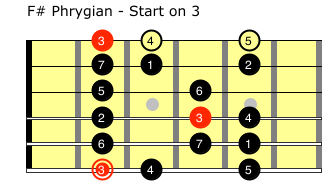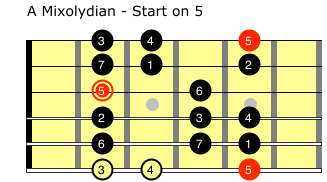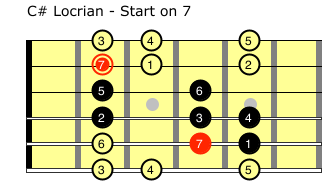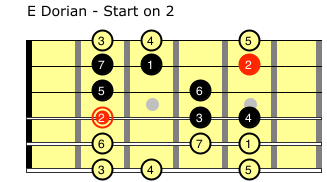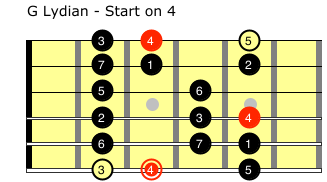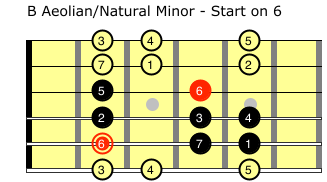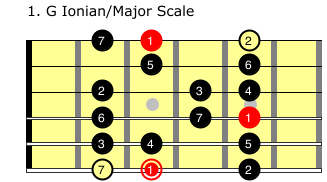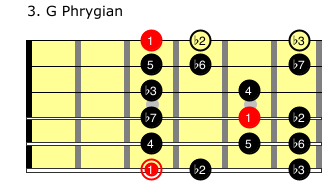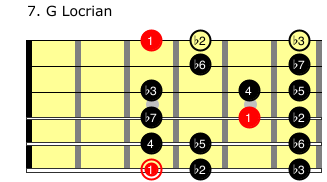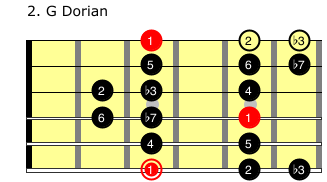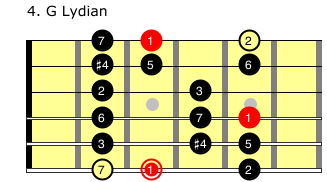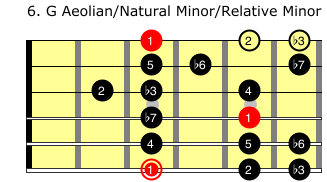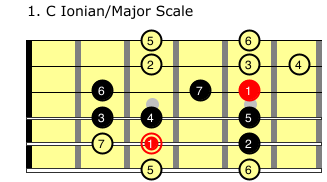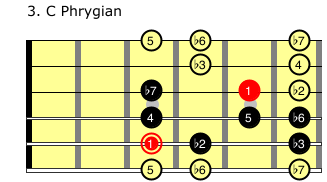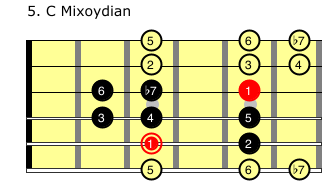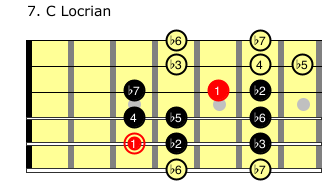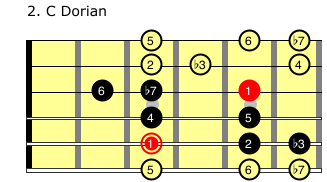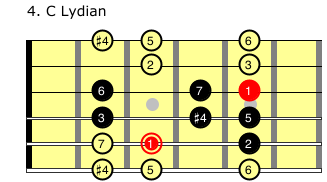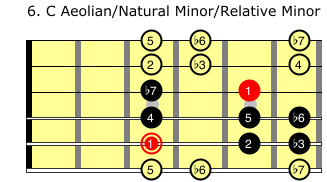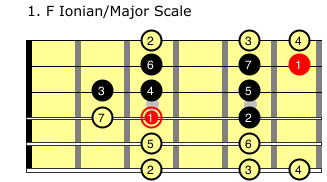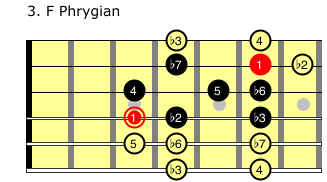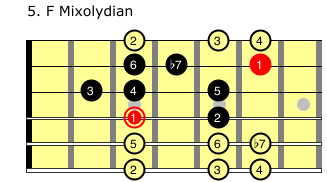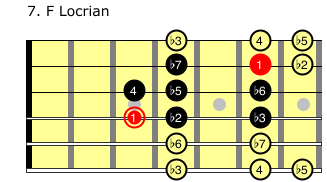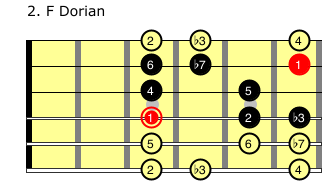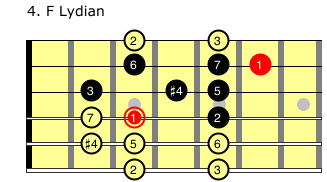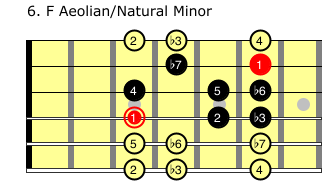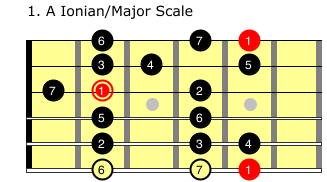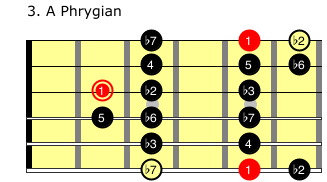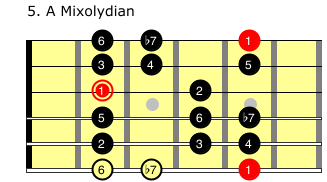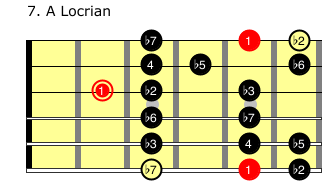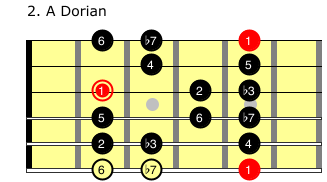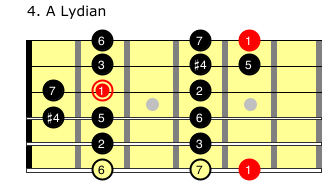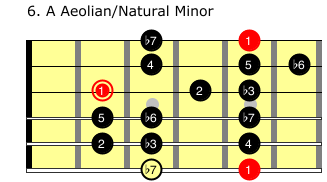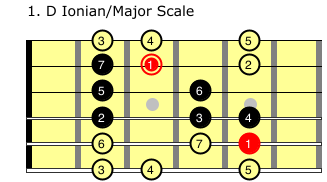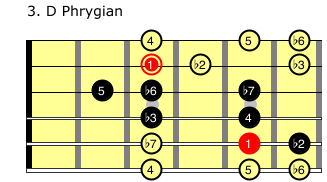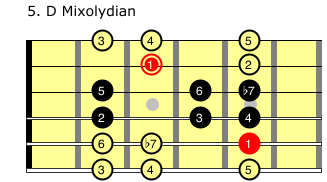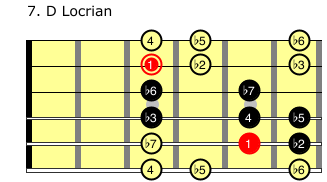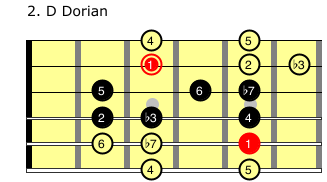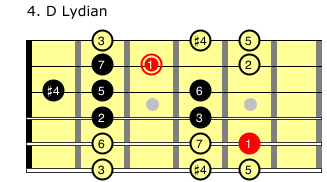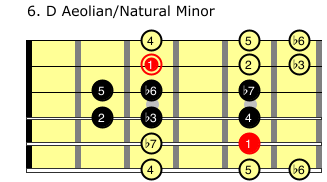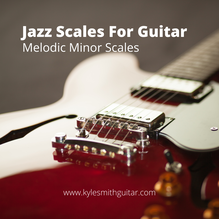 Modes are an important, and often confusing topic you are guaranteed to come across when learning jazz scales on guitar playing . Sometimes, modes are treated as some kind of holy grail that will magically make your guitar playing better once you understand how they work and know their names. Other times, mode scale patterns are brushed aside as almost unnecessary, and mostly ignored. In this lesson we'll talk about modes of the major scale, and how you can use these jazz scales in your own guitar playing. We'll talk about the common problems that come up when people start talking about modes in jazz, learn two simple approaches to thinking about modes, and find out how to use modes to play solos on jazz standards, and outline chord changes. What You Need To KnowIt will be helpful if you know your 5 major scale shapes before tackling this lesson, since all of the modes are drawn from the major scale shapes. If you don't know these scale patterns yet, click here for an in-depth lesson on the 5 major scale shapes for guitar. Be patient - modes are not a magical piece of knowledge that fixes your jazz guitar playing overnight. They take some time to get under your fingers and into your ears. If you do it right, this should be fun - just don't expect a quick fix. The Problem With ModesThere are too extremes instructors tend to go to when talking about modes: Extreme #1: Way Overcomplicated - You have to learn 10,000 scale patterns to even get started playing. (How will you even remember all this stuff when you're playing a tune?) Extreme #2: Way Oversimplified - It's just the major scale - you'll be fine. Kind of an old school approach, and those guys made it work. That being said, there were some unsaid nuances to this that got a little lost over the years. When the great jazz guitar players were able to use this kind of an approach, but still outline the changes to whatever tune they were playing. Most of the people I've heard teaching this approach exclusively don't really play that well themselves. (Obviously there are exceptions to this!) Meeting In The MiddleBoth approaches to learning and playing modes are "true." Modes can be as simple as the major scale starting on different notes, but you have to spend the time playing with each mode to learn their particular sounds in the context of that major scale pattern. (This is the part that many oversimplifying instructors gloss over - because it either seems obvious to them, or they don't understand why it's important.) And if we want to get really zoomed in to study modes in depth, each mode does have a unique sequence of intervals based off of the root of that mode. (So if you're serious about this, it's worth a look at each mode individually as well.) The difference is in how you use the two different approaches to playing modes: Thinking in the context of the major scale is a simpler approach to addressing modes for playing over chord changes. This works well for how we think about changes in terms fo chord number (2, 5, 1, etc). Students get confused because they often get told that the scale for the 2 chord is built 1, 2, b3, 4, 5, 6, b7, the scale for the 5 chord is built 1, 2, 3, 4, 5, 6, b7, etc There are a lot of numbers flying around. While this is technically correct, it isn't very helpful for someone getting their feet wet with jazz improvisation. For playing changes, it can make much more sense at first to say that the scale for the 2 chord is 2, 3, 4, 5, 6, 7, 1 of the major scale, the scale for the 5 chord is 5, 6, 7, 1, 2, 3, 4 of the major scale, etc. This way you are using the same source material, from a different viewpoint. You're still "playing the modes" - you're just not thinking about them they way they are usually taught. This approach makes the chord changes much simpler to keep track of (2, 5, 1) using the same basic information you use to play the major scale. For my students, I often refer to this as a "quick and dirty" study of modes and playing changes. When you really want to dive into the different sounds you can get out of your instruments and understand how the scales work, it's time to dive into what makes each individual mode tick. When we work from a certain note and want to generate a particular mode, we need to know that modes interval structure. This makes it easier to access "D Phrygian" without having to think about what major scale it comes from - you can just play D Phrygian. In this lesson, we'll look at each mode both ways - coming from a major scale pattern, and as it's own individual scale shape. Use whichever approach fits your needs right now - either way will get you started so focus on the approach that makes the most sense to you right now. Ultimately you want to explore both approaches if you want to have a good understanding of how modes work on your instrument and in music. Major Scale Diatonic ModesIn this section we'll look at using the major scale shapes to access all 7 modes. Each major scale shape contains all 7 modes, and it's a matter of learning where to start to create the sounds you want to hear. We'll go through one scale shape at a time, showing you how to create all 7 modes of the major scale. This is an effective way to start using modes to play chord changes, because it keeps you from having to jump all over the place - your melodic material for any diatonic chord is already under your fingers. Mode ConstructionWe'll be looking at the modes as they occur within a single major scale pattern. This is a good way to outline chord changes using jazz scales on your guitar. Modes will be labeled with their mode name, and the numbered chord from a progression that they match up with. You'll be able to see how this makes it simple to find material to play over a 5 chord, 3 chord, etc. This approach is sometimes thought of as "chord scales" rather than modes - playing the scale that matches a given chord in a progression. What you call it honestly doesn't matter - both titles refer to the same sequence of notes. What matters is if you can play it or not in the moment, as you're playing through a tune. Each mode below is labeled with its Mode name, chord number, construction based on the major scale intervals, and common chord symbols. Ionian (1 chord) - 1 2 3 4 5 6 7 - Maj7, ∆7 Dorian (2 chord) - 2 3 4 5 6 7 1 -min7, -7 Phrygian (3 chord) - 3 4 5 6 7 1 2 - min7, -7, 7susb9 Lydian (4 chord) - 4 5 6 7 1 2 3 - maj7, ∆7, Maj7#11 Mixolydian (5 chord) - 5 6 7 1 2 3 4 - 7 Aeolian (6 chord) - 6 7 1 2 3 4 5 - min7 Locrian (7 chord) - 7 1 2 3 4 5 6 - min7b5, ø7, -7b5 Below you'll find the diatonic modes in scale diagram form for each of the 5 major scale shapes. 6th String Major Scale Modes5th String Major Scale Modes4th String Major Scale Modes3rd String Major Scale Modes2nd String Major Scale ModesModes As Individual Scale PatternsIn this section, we'll be looking at the modes as they occur when constructed from a single root note. For each string, you will find 7 different modes starting from the same root note. On closer inspection, you will find that all of these patterns exist in the section above - because every mode really is still the major scale from a different angle. The different starting points give you a perspective that allows you to create different sounds within the context of the major scale. Studying the modes like this will give you a deeper insight into how modes are built, how each mode sounds, and how they fit onto the fretboard. These are a good reference for when you are playing modal jazz, or any time a specific mode is called for in music. Mode Construction:Ionian - 1 2 3 4 5 6 7 Dorian - 1 2 b3 4 5 6 b7 Phrygian - 1 b2 b3 4 5 b6 b7 Lydian - 1 2 3 #4 5 6 7 Mixolydian - 1 2 3 4 5 6 b7 Aeolian - 1 2 3 4 5 b6 b7 Locrian 1 b2 b3 4 b5 b6 b7 6th String Individual Modes5th String Individual Modes4th String Individual Modes3rd String Individual Modes2nd String Individual ModesMastering Jazz Scales For Guitar - Major ModesKnowing these scale shapes is not going to be enough to make you a better player. You have to practice them - play with them regularly so you can understand what makes them tick. Depending on what you want to use jazz scales for, I'd recommend focusing on:
Spend time with one of these options For a while, and then explore the other option later on. If you want to get better at playing changes, I'd recommend that you focus on Diatonic Modes first. If you want to expand your knowledge of each individual mode, focus on modes as individual scale patterns first. Keep PlayingThe most important thing is that you spend some time playing and applying these jazz scales on your guitar fretboard.
Too many students get the information, learn the trivia, and never actually spend the tine getting these patterns onto their guitar. Even if you only work with a few of these patterns - knowing a couple of them really well will get you farther than having a "scratching the surface" level of knowledge of every scale there is. Keep practicing, keep playing, and let me know how it goes!
0 Comments
Your comment will be posted after it is approved.
Leave a Reply. |
